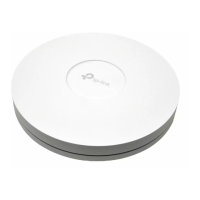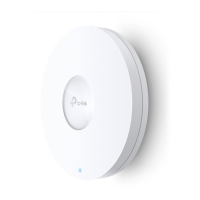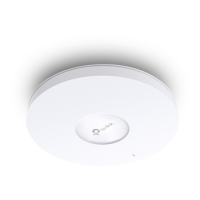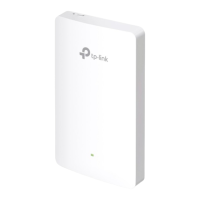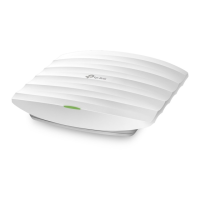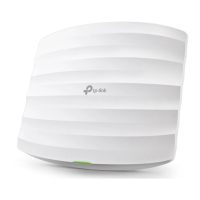Do you have a question about the TP-Link Omada EAP620 and is the answer not in the manual?
Steps to access the EAP's web interface via wireless or wired connection.
Set up SSIDs, security, and advanced wireless settings for optimal performance.
Create and configure wireless network names (SSIDs) and their security settings.
Adjust radio settings, load balance, airtime fairness, and more for performance.
Set up authentication for guest access, including welcome pages and redirection.
Check SSIDs, radio settings, and traffic statistics for wireless performance.
View connected client information and manage blocked clients.
Configure dynamic or static IP settings for the EAP.
Control access to the EAP's web page via MAC authentication and management VLANs.
Configure EAP discovery and adoption by Omada controllers.
Reboot or reset the EAP to factory defaults.
Save and load EAP configuration settings.
Steps to access the EAP's web interface via wireless or wired connection.
Set up SSIDs, security, and advanced wireless settings for optimal performance.
Create and configure wireless network names (SSIDs) and their security settings.
Adjust radio settings, load balance, airtime fairness, and more for performance.
Set up authentication for guest access, including welcome pages and redirection.
Check SSIDs, radio settings, and traffic statistics for wireless performance.
View connected client information and manage blocked clients.
Configure dynamic or static IP settings for the EAP.
Control access to the EAP's web page via MAC authentication and management VLANs.
Configure EAP discovery and adoption by Omada controllers.
Reboot or reset the EAP to factory defaults.
Save and load EAP configuration settings.
| Frequency | 2.4 GHz and 5 GHz |
|---|---|
| Antenna Gain | 2.4 GHz: 4 dBi, 5 GHz: 5 dBi |
| MU-MIMO | Yes |
| OFDMA | Yes |
| Beamforming | Yes |
| Operating Humidity | 10% to 90% non-condensing |
| Wireless Standards | IEEE 802.11ax/ac/n/g/b/a |
| Antenna Type | Internal Omni |
| Ethernet Ports | 1 x Gigabit Ethernet |
| PoE | 802.3at |
| Management | Omada SDN |
| Wireless Speed | 574 Mbps on 2.4 GHz and 1201 Mbps on 5 GHz |
| Mounting | Ceiling/Wall Mounting |
| Security | WPA3, WPA2 |
| Operating Temperature | 0°C to 40°C (32°F to 104°F) |
| Max Data Rate | 1775 Mbps (combined) |
